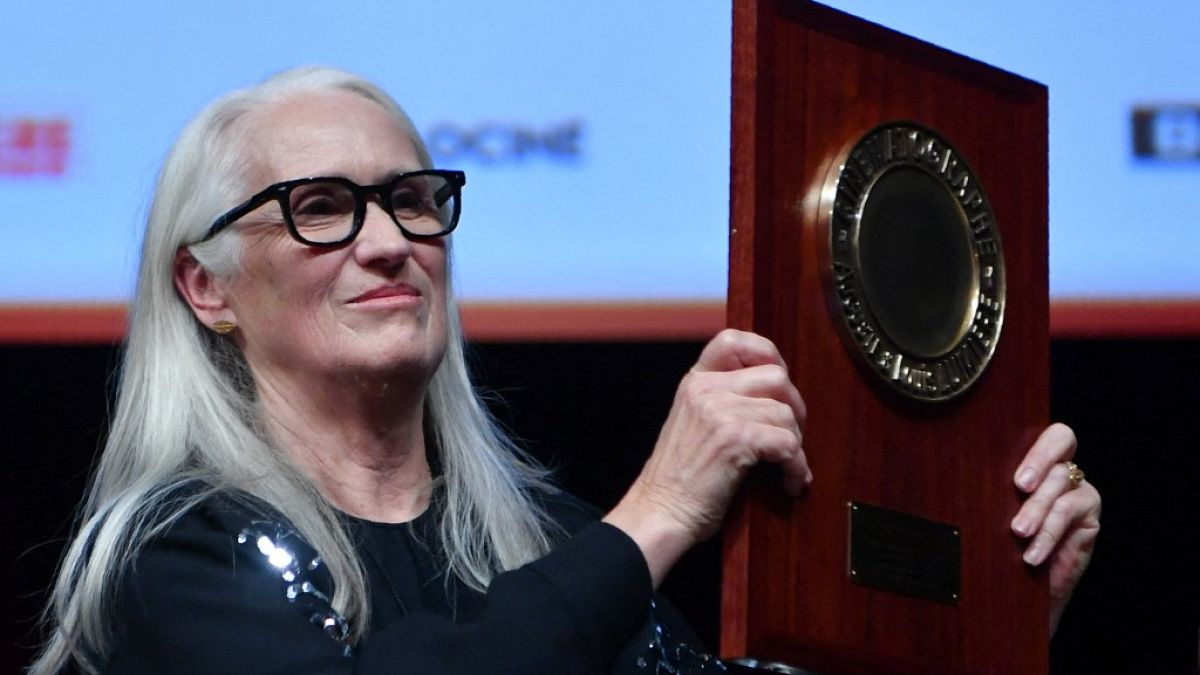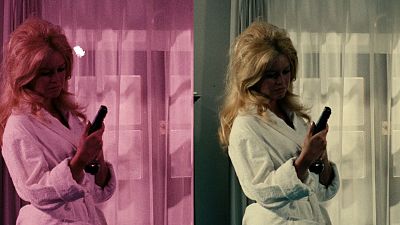More women have won top prizes at historic film festivals in the last six years than in six decades. Parity is progressing, but there is still a huge amount of ground to make up.
This year's Lumière Festival in Lyon honoured director Wim Wenders, the 12th man to win this award in 15 years.
Is the level of parity at this "young" film festival on a par with that of the three other major historical film festivals: the Berlinale, Cannes, the Venice Film Festival - as well as the Oscars?
At Europe's top three festivals, for each of their main prizes or for best film, the women who win awards are largely in the minority - as is the case at the Lumière Festival.
In percentage terms, the Lumière Festival, with a smaller sample of 15 prize-winners, can boast a 20% share of female prize-winners, which is hard to compare with festivals that are more than 70 years old.
The Venice Film Festival is the one that has proportionally awarded the most prizes to women directors, with 10% of the Golden Lions going to women. The Berlinale comes close with 8% of Golden Bears awarded to women.
The Cannes Film Festival and the Academy, on the other hand, have awarded only 3% of their prizes to women directors.
The Berlinale and the Venice Mostra also rewarded women earlier than the Cannes Festival and the Oscars. This is despite the fact that women directors have existed since the birth of cinema, such as Alice Guy, who made her first film in 1906.
Hungarian director Márta Mészáros won the Golden Bear in 1975 with Adoption, while Venice celebrated Margarethe von Trotta with The Years of Lead in 1981. At Cannes, while Bodil Ipsen co-directed the Danish film The Earth Will Be Red, which won the Grand Prix, forerunner of the Palme d'Or, along with ten other films in 1946, it was not until 1993 that Jane Campion won a Palme d'Or in a year of double awards. In 2021, Julia Ducournau became the first female director to win the Palme d'Or alone for Titane.
The Oscar for Best Film, the Academy's most prestigious award, remained a male prize until 2009, when Kathryn Bigelow won for The Hurt Locker.
This lack of parity in the awarding of prizes at major film festivals, which has been widely highlighted in recent years, has only eased slightly in recent years. The number of women directors winning prizes has been rising since the 2020s; 2017 was even the year of the #MeToo movement at the Berlinale.
In a study produced by the Collectif 50/50, which works to promote parity, equality and diversity in the film and audiovisual industries, the proportion of women directors selected at the three historic European film festivals has never reached exact parity. Even since the 2020s, they represent between 23% and 35% of the directors of films selected.
This figure is a little closer to the current weight of women directors in the European film industry. In a study for 2022, the Council of Europe reported that women accounted for 25% of directors. The Council points out that this figure needs to be tempered by the fact that, on average, women directors direct fewer films than their male colleagues and co-direct more often than men and, in general, with men. The average number of women directors per film is 22%, a figure that has remained stable since 2017.
The representation of women in award-winning films made by men
How much space do these films, which are overwhelmingly made by men, leave for women in their screenplays?
To assess this information in broad strokes, we put these award-winning films through the scanner of two large collaborative databases of the Bechdel-Wallace test(The Bechdel Test and The Cherry Picks), each containing thousands of films. This test is a set of three criteria, conceptualised in a comic strip by the author Alison Bechdel in 1985, which looks at whether a work has :
- at least two named women (surname/first name) ;
- who speak together ;
- and who talk about something that has nothing to do with a man.
While this test should not be taken as a label, it does allow films to be compared with each other on the basis of these criteria.
What's more, as this test is not an "official" object, the existing databases do not cover all the films in existence like some of the major cinema databases, and each assessment can be subject to debate. Depending on the festival, the corpus covered ranges from 33% for the Berlinale to around half for Cannes and the Venice Film Festival, and almost all (98%) of the films awarded an Oscar for Best Feature Film.
For the three festivals for which the results are starting to be significant, the picture from the point of view of this test is mixed for the representation of women filmed and scripted predominantly by men (28% of screenwriters for European films produced between 2017 and 2021, according to the Council of Europe in its report). At the Oscars, 47% of films fulfil the three criteria; the Cannes Film Festival, half of whose films were studied by the participatory databases, is close to this result, with 44% of the films studied fulfilling the three criteria. The Venice Film Festival, with 55% of films studied, does slightly better, with 61% of films passing the Bechdel test.
The lack of parity in cinema is reflected in the festivals, but it is only a reflection full of glitter. In France, the measures taken by the Centre National du Cinéma et de l'image animé (CNC), such as the parity bonus or the requirement for parity on festival juries, are beginning to bear fruit, and the CNC will be studying them in a report to be published in 2022.
Parity will only be able to make headway when the industry as a whole, whether in film studies, film financing, or technical and artistic teams, is feminised.



